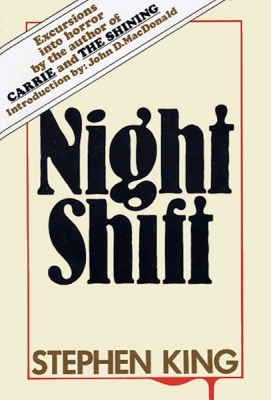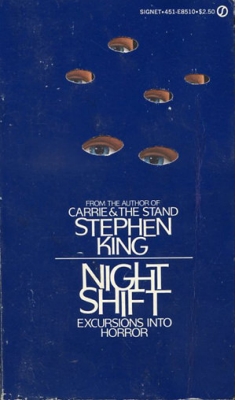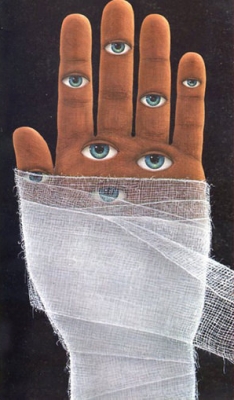The Golden Age of Science Fiction: Night Shift, by Stephen King
The Balrog Award, often referred to as the coveted Balrog Award, was created by Jonathan Bacon and first conceived in issue 10/11 of his Fantasy Crossroads fanzine in 1977 and actually announced in the final issue, where he also proposed the Smitty Awards for fantasy poetry. The awards were presented for the first time at Fool-Con II at the Johnson County Community College in Overland Park, Kansas on April 1, 1979. The awards were never taken particularly seriously, even by those who won the award. The final awards were presented in 1985. The Balrog Award for Collection/Anthology was presented each year that the awards were active.
The stories in Night Shift cover a period from the late 1960s through 1976, a time when King was maturing as an author and finding his own voice as well as becoming a best selling author. Many of the stones in Night Shift would form the basis of novels and films, notably “Jerusalem’s Lot,” “Lawnmower Man,” “children of the corn,” and “Graveyard Shift.”
King opens The collection with “Jerusalem’s Lot,” which was a previously unpublished version of his novel Salem’s Lot. Although King comments that the story has a basis in Bram Stoker’s Dracula, it’s even more obvious antecedents are the works of H. P. Lovecraft. Even as King tries to emulate Lovecraft’s style, he never quite captures it, making the story of The Boone family in Maine feel overwritten rather than chilling. By the time King gets to “The Man Who Loves Flowers,” he has discovered that a more naturalistic world provides the opportunity for much more chilling horror. The fantastic creatures of “Jerusalem’s Lot” could only happen in fiction or dreams, but the sociopathic horror of kings’ protagonist in he later story could be anyone the reader meets on the street.


